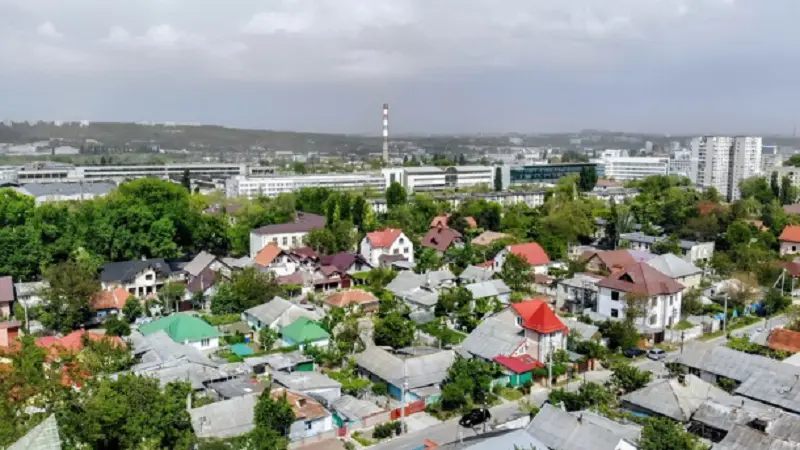Constantin Brâncuși, a titan of modernist sculpture, is renowned for his pioneering contributions to abstract art. Born in a remote village in Romania, Brâncuși’s early life and the rich cultural heritage of his homeland played a critical role Brancusi Homeland Hoogtepunten in shaping his revolutionary artistic vision. This article delves into the key highlights of Brâncuși’s homeland, exploring how his Romanian roots influenced his path to becoming one of the most influential sculptors of the 20th century.
Early Life in Hobița
The Rugged Landscape of Gorj County
Constantin Brâncuși was born on February 19, 1876, in the village of Hobița, located in Gorj County, Romania. This picturesque area, nestled in the foothills of the Carpathian Mountains, is characterized by its rugged terrain, lush forests, and traditional rural charm. The natural beauty and the isolation of Hobița provided Brâncuși with a unique environment rich in sensory and cultural stimuli. The traditional wooden Brancusi Homeland Hoogtepunten houses, often intricately carved, and the simple yet functional, rural architecture profoundly impacted his aesthetic sensibilities.
Influences of Romanian Folk Art
Growing up in Hobița, Brâncuși was immersed in Romanian folk culture, which is known for its intricate craftsmanship and symbolic motifs. The local folk art, including wood carvings, textiles, and ceramics, often featured abstract forms and geometric patterns that reflected the region’s deep spiritual and cultural roots. These traditional forms, combined with the local craftsmanship that Brâncuși observed during his childhood, laid the foundation for his later work. The simplicity and purity of form in Romanian folk art were mirrored in Brâncuși’s sculptures, which sought to distill complex ideas into essential forms.
Artistic Education and Early Influences
The Craiova School of Fine Arts
In 1898, Brâncuși moved to Craiova to study at the School of Fine Arts. This period marked a significant shift from his rural upbringing to a more Brancusi Homeland Hoogtepunten formal artistic education. At Craiova, he was introduced to classical art techniques, which provided him with the technical skills necessary for his future endeavors. However, Brâncuși’s innate curiosity and desire for innovation soon pushed him beyond the confines of traditional academic art.
Studies at the National School of Fine Arts in Bucharest
In 1898, Brâncuși continued his artistic education at the National School of Fine Arts in Bucharest. This period was crucial for his development as an artist, exposing him to a wide range of artistic styles and influences. Bucharest, being a cultural hub, offered Brâncuși access to contemporary artistic movements and avant-garde ideas. Despite this exposure, his work remained deeply rooted in the folk traditions of his homeland. The modernist Brancusi Homeland Hoogtepunten influences he encountered in Bucharest would later blend with his understanding of Romanian cultural symbols, leading to a unique and groundbreaking artistic style.
Brâncuși’s Move to Paris
The Parisian Art Scene
In 1904, Brâncuși moved to Paris, which was then the epicenter of the avant-garde movement. Paris offered him the opportunity to engage with some of the most Brancusi Homeland Hoogtepunten influential artists and movements of the time, including Impressionism, Cubism, and Surrealism. The city’s vibrant art scene provided a fertile ground for Brâncuși’s experimentation with form and abstraction.
Despite the new influences, Brâncuși’s work in Paris was heavily informed by his Romanian background. His interactions with contemporaries like Pablo Picasso and Amedeo Modigliani did not lead him to abandon his roots but rather inspired him to refine his approach to abstraction. Brâncuși’s work began to reflect a synthesis of modernist principles and traditional Romanian motifs, creating a style that was both innovative and deeply personal.
Key Sculptures and Innovations
Brâncuși’s time in Paris was marked by a series of significant sculptures that would define his career. Works such as “The Kiss” (1907-1908) and “Bird in Space” (1923) showcased his revolutionary approach to form and abstraction. “The Kiss,” with its simplified, almost block-like representation of the human form, exemplifies his departure from detailed, realistic depictions to a more distilled, symbolic expression. Similarly, “Bird in Space” is celebrated for its elegant abstraction, capturing the essence of flight through a sleek, minimalist form.
Brâncuși’s ability to convey profound ideas through simplicity was a direct extension of his early experiences with Romanian folk art. His Parisian work, while groundbreaking, was deeply informed by the aesthetic values Brancusi Homeland Hoogtepunten he absorbed in his homeland.
The Târgu Jiu Monumental Ensemble
A Tribute to Romanian Heritage
One of Brâncuși’s most significant contributions to Romanian culture is the Târgu Jiu Monumental Ensemble, a series of public artworks created to honor Romanian soldiers who died in World War I. Completed in 1937, the ensemble Brancusi Homeland Hoogtepunten includes “The Endless Column,” “The Gate of the Kiss,” and “The Table of Silence.” This monumental project reflects Brâncuși’s ability to integrate his artistic innovation with national identity and historical memory.
Symbolism and Design
Each component of the Târgu Jiu ensemble carries deep symbolism and reflects elements of Romanian folk art.
- The Endless Column: This sculpture is a towering, spiraling column that symbolizes the continuity and unity of the Romanian people. Its design is inspired by traditional Romanian column motifs, which often feature intricate patterns and repeating geometric forms. The column’s upward movement signifies aspiration and the eternal spirit of the nation.
- The Gate of the Kiss: This piece is a monumental gate adorned with carvings that represent stylized kiss symbols, a reference to Romanian Brancusi Homeland Hoogtepunten traditional motifs. The gate serves as a symbolic entryway into a space of reflection and remembrance, aligning with Brâncuși’s theme of simplicity and profound symbolism.
- The Table of Silence: This sculpture consists of a circular table surrounded by chairs, each designed with abstract forms. It represents a space for communal reflection and solemn remembrance, aligning with the themes of unity and honor present throughout the ensemble.
Cultural and Artistic Impact
Preservation and Legacy
Brâncuși’s homeland has preserved and celebrated his legacy through various initiatives and cultural institutions. The Târgu Jiu Monumental Brancusi Homeland Hoogtepunten Ensemble remains a major cultural landmark, drawing visitors from around the world. The Brâncuși Museum in Târgu Jiu provides insights into his life, work, and the cultural context that shaped his artistic vision.
Efforts to preserve and promote Brâncuși’s work include exhibitions, academic research, and cultural programs that highlight his contributions to modern art. The integration of his Romanian roots with his avant-garde innovations continues to be a point of interest for scholars and art enthusiasts alike.
Influence on Contemporary Art
Brâncuși’s influence extends far beyond his own time, impacting a wide range of contemporary artists and movements. His emphasis on form and abstraction has inspired countless artists to explore new ways of representing fundamental Brancusi Homeland Hoogtepunten human experiences. The simplicity and purity of his work continue to resonate with contemporary audiences, reflecting the timeless nature of his artistic vision.
Conclusion
Constantin Brâncuși’s artistic journey from the rural landscapes of Hobița to the avant-garde circles of Paris is a testament to the profound impact of cultural heritage on artistic innovation. His early life in Romania, marked by exposure to traditional folk art and the natural beauty of his surroundings, played a crucial role in shaping his approach to sculpture.
The highlights of Brâncuși’s homeland, including his early influences, education, and the Târgu Jiu Monumental Ensemble, underscore the deep connection between his Romanian roots and his groundbreaking work in modernist sculpture. As we continue to celebrate and explore Brâncuși’s legacy, we gain a deeper appreciation for how his homeland’s rich cultural heritage contributed to his revolutionary contributions to art. Through his work, Brâncuși bridged the gap between tradition and innovation, creating a legacy that Brancusi Homeland Hoogtepunten continues to inspire and captivate audiences worldwide.


